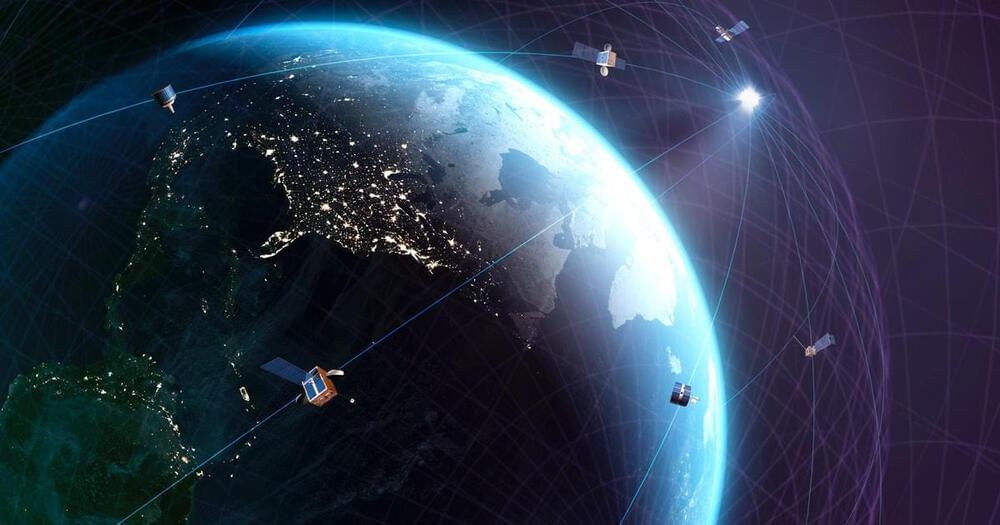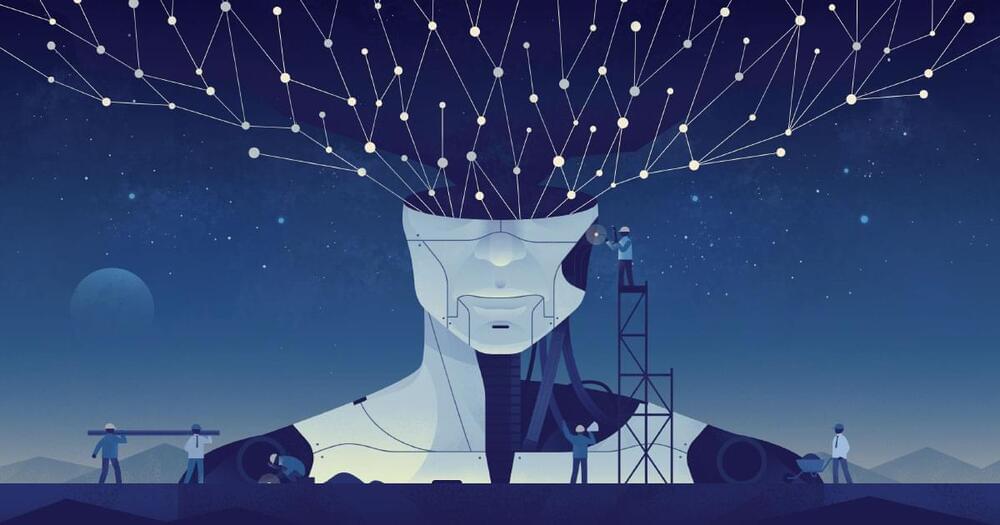This was the voyage of the RSS First Step today. Its mission: encounter Earth from incredible views at apogee.
Get the latest international news and world events from around the world.

Starlink: SpaceX’s next launch will bring a huge upgrade to the service
Starlink is feeling the chill.
On Wednesday, Teslarati reported that SpaceX will likely host its second Starlink launch from the west coast of the U.S. as soon as Sunday, October 17. The mission is expected to launch 51 Starlink satellites, complete with optical interlinks that will enable the satellites to bring internet access to Earth’s poles.
It’s another moment of expansion for SpaceX’s under-construction internet constellation, designed to bring high speed and low latency access to almost anywhere in the world. The company first started signing up beta testers in mid-2020, and early reports suggested that users are receiving up to 150 megabits per second.
For the long term, SpaceX has plans for much faster access. A January 2021 presentation suggested the company’s long-term ambition is to provide speeds of up to 10 gigabits per second.

Oregon company’s iron battery breakthrough could eat lithium’s lunch
The world’s electric grids are creaking under the pressure of volatile fossil-fuel prices and the imperative of weaning the world off polluting energy sources. A solution may be at hand, thanks to an innovative battery that’s a cheaper alternative to lithium-ion technology.
SB Energy Corp., a U.S. renewable-energy firm that’s an arm of Japan’s SoftBank Group, is making a record purchase of the batteries manufactured by Energy Storage Systems. The Oregon company says it has new technology that can store renewable energy for longer and help overcome some of the reliability problems that have caused blackouts in California and record-high energy prices in Europe.
The units, which rely on something called “iron-flow chemistry,” will be used in utility-scale solar projects dotted across the U.S., allowing those power plants to provide electricity for hours after the sun sets. SB Energy will buy enough batteries over the next five years to power 50,000 American homes for a day.
A Space Balloon Company Might Take You in Space Before Bezos and Branson
Space travel is no longer a dream, because, now, for $125,000, anyone can book a ticket to space. This eye-catching deal is being offered by Space Perspective, a space tourism company that has created a balloon-driven space capsule called Neptune One, for conducting commercial space flights. Neptune conducted its first test flight in June 2,021 and from the same month, Space Perspective has also started accepting seat bookings for spaceflights in the years 2,024 2025, and beyond.
During its proposed space flights, Neptune plans to carry passengers 100,000 feet (about 30 km or 18.64 miles) up in the sky. However, according to the Fédération Aéronautique Internationale (FAI), outer space actually starts at a height of 330,000 feet (100 km or 62 miles) from the Earth. So technically, the passengers aboard Neptune One would only be referred to as space tourists (just like Richard Branson and Jeff Bezos), and not as astronauts.
Scientists Say We Need to Rethink How We Dispose of Satellites
The term, “casualty risk” doesn’t literally mean humans will be smashed by falling satellites, but there is an increasing risk of satellite collisions, which could hinder or even spell disaster for future orbital missions. And, satellites de-orbited without control could pose a danger to property or the well-being of some on the surface.
In other words, it’s time to rethink the way we dispose of satellites.
Full Story:
What goes up, must come down.
Or at least, for satellites, it should.

Deep learning helps predict traffic crashes before they happen
Today’s world is one big maze, connected by layers of concrete and asphalt that afford us the luxury of navigation by vehicle. For many of our road-related advancements — GPS lets us fire fewer neurons thanks to map apps, cameras alert us to potentially costly scrapes and scratches, and electric autonomous cars have lower fuel costs — our safety measures haven’t quite caught up. We still rely on a steady diet of traffic signals, trust, and the steel surrounding us to safely get from point A to point B.
“If people can use the risk map to identify potentially high-risk road segments, they can take action in advance to reduce the risk of trips they take. Apps like Waze and Apple Maps have incident feature tools, but we’re trying to get ahead of the crashes — before they happen,” says He.
Full Story:
A deep model was trained on historical crash data, road maps, satellite imagery, and GPS to enable high-resolution crash maps that could lead to safer roads.

Foundations Built for a General Theory of Neural Networks
From 2019: Long before we can certify that neural networks can drive cars, we need to prove that they can multiply.
This work is still in its very early stages, but in the last year researchers have produced several papers which elaborate the relationship between form and function in neural networks. The work takes neural networks all the way down to their foundations. It shows that long before you can certify that neural networks can drive cars, you need to prove that they can multiply.
The Best Brain Recipe
Neural networks aim to mimic the human brain — and one way to think about the brain is that it works by accreting smaller abstractions into larger ones. Complexity of thought, in this view, is then measured by the range of smaller abstractions you can draw on, and the number of times you can combine lower-level abstractions into higher-level abstractions — like the way we learn to distinguish dogs from birds.
Growing Young
He says here that we will not live to 150 without merging with technology. Since rejuvenation already exists for worms, mice, and rats I see no reason why a person could not make it that long and longer.
In this video Sergey talks about his ideas for when we will reach Longevity Escape Velocity, his vision for the longer term and the implications for society as people live longer.
Sergey Young is a longevity investor and visionary on a mission to help one billion people extend their lifespans and live longer, healthier lives. To do that, Sergey founded Longevity Vision Fund to accelerate breakthroughs in life extension technology and to make longevity affordable and accessible to all.
Sergey is on the Board of Directors for the American Federation of Aging Research (AFAR) and is the Development Sponsor for AGE REVERSAL XPRIZE’s global competition designed to cure aging.
Sergey Young has been featured as a top longevity expert and contributor on CNN, BBC, Fox News, and Forbes. As the author of books such as ‘The Science and Technology of Growing Young’ and the mastermind behind the online life extension platform SergeyYoung.com, Sergey is passionate about sharing news from the exciting world of longevity.

Sorry AI — The Brain Is Still The Best Inference Machine Out There
Despite the continued progress that the state of the art in machine learning and artificial intelligence (AI) has been able to achieve, one thing that still sets the human brain apart — and those of some other animals — is its ability to connect the dots and infer information that supports problem-solving in situations that are inherently uncertain. It does this remarkably well despite sparse, incomplete, and almost always less than perfect data. In contrast, machines have a very difficult time inferring new insights and generalizing beyond what they have been explicitly trained on or exposed to.
How the brain evolved to achieve these abilities and what are the underlying ‘algorithms’ that enable them to remain poorly understood. The development and investigation of mathematical models will lead to a deep understanding of what the brain is doing and how are not mature and remain a very active area of research.
Full Story:
Intech Company is the ultimate source of the latest AI news. It checks trusted websites and collects bests pieces of AI information.
NASA Searching for Free-Floating Planets With Artificial Intelligence and Gravitational Microlensing
Exoplanet hunters have found thousands of planets, most orbiting close to their host stars, but relatively few alien worlds have been detected that float freely through the galaxy as so-called rogue planets, not bound to any star. Many astronomers believe that these planets are more common than we know, but that our planet-finding techniques haven’t been up to the task of locating them.
Most exoplanets discovered to date were found because they produce slight dips in the observed light of their host stars as they pass across the star’s disk from our viewpoint. These events are called transits.
NASA.